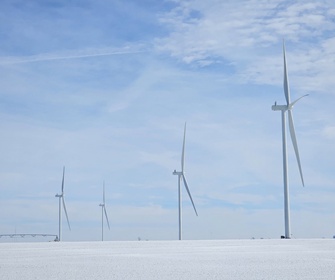The collaboration between ocean industries will need to intensify for the rapid buildout of offshore wind and aquaculture to coexist sustainably with other industries and the ecosystem. According to DNV’s Spatial Competition Forecast, the amount of ocean space occupied by installations will grow 5-fold by 2050. This will be driven by offshore wind, which will account for 80% of stationary infrastructure at sea by mid-century, followed by aquaculture (13%) and oil and gas (5%).
Whilst ocean space is plentiful, industrial activity will be located primarily close to shore which will heighten the need for ocean coexistence. To enable stakeholders to gauge the demand for ocean space DNV has developed the Spatial Competition Index. According to this index, the North Sea is the area in Europe that will see the greatest competition due to the large number of shipping lanes and ports, as well as the strong presences of the fishing, aquaculture, oil and gas, and wind industries. Installations for offshore energy and food production will cover 23% of the area between 2-50 km from shore in water depths less than 50 metres.
Greater China’s emergence as the powerhouse of the blue economy is reflected in offshore construction. It will account for a third of all global infrastructure built at sea by 2050, mainly due to the sharp increase in offshore wind, which will make up 13% of the region’s electricity production. The Indian Subcontinent sees the strongest growth in area covered by stationary infrastructure, as the region experiences fast offshore wind development requiring vast areas, whereas historically, offshore oil and gas and marine aquaculture are negligible in this region.
Globally, the area occupied by fixed offshore wind will grow from about 9,000 km2 today to about 242,000 km2 by mid-century. Floating offshore wind will grow from a low of 15 km2 today to more than 33,000 km2 by 2050. Compared with bottom-grounded installations, floating offshore wind can potentially ease some of the tensions between offshore wind and fisheries, as it takes renewable energy production out of the way of the fishing fleet operating on shallow banks.








